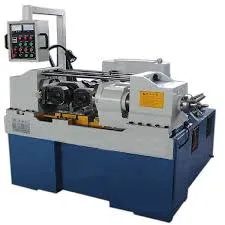
-
 Afrikaans
Afrikaans -
 Albanian
Albanian -
 Amharic
Amharic -
 Arabic
Arabic -
 Armenian
Armenian -
 Azerbaijani
Azerbaijani -
 Basque
Basque -
 Belarusian
Belarusian -
 Bengali
Bengali -
 Bosnian
Bosnian -
 Bulgarian
Bulgarian -
 Catalan
Catalan -
 Cebuano
Cebuano -
 Corsican
Corsican -
 Croatian
Croatian -
 Czech
Czech -
 Danish
Danish -
 Dutch
Dutch -
 English
English -
 Esperanto
Esperanto -
 Estonian
Estonian -
 Finnish
Finnish -
 French
French -
 Frisian
Frisian -
 Galician
Galician -
 Georgian
Georgian -
 German
German -
 Greek
Greek -
 Gujarati
Gujarati -
 Haitian Creole
Haitian Creole -
 hausa
hausa -
 hawaiian
hawaiian -
 Hebrew
Hebrew -
 Hindi
Hindi -
 Miao
Miao -
 Hungarian
Hungarian -
 Icelandic
Icelandic -
 igbo
igbo -
 Indonesian
Indonesian -
 irish
irish -
 Italian
Italian -
 Japanese
Japanese -
 Javanese
Javanese -
 Kannada
Kannada -
 kazakh
kazakh -
 Khmer
Khmer -
 Rwandese
Rwandese -
 Korean
Korean -
 Kurdish
Kurdish -
 Kyrgyz
Kyrgyz -
 Lao
Lao -
 Latin
Latin -
 Latvian
Latvian -
 Lithuanian
Lithuanian -
 Luxembourgish
Luxembourgish -
 Macedonian
Macedonian -
 Malgashi
Malgashi -
 Malay
Malay -
 Malayalam
Malayalam -
 Maltese
Maltese -
 Maori
Maori -
 Marathi
Marathi -
 Mongolian
Mongolian -
 Myanmar
Myanmar -
 Nepali
Nepali -
 Norwegian
Norwegian -
 Norwegian
Norwegian -
 Occitan
Occitan -
 Pashto
Pashto -
 Persian
Persian -
 Polish
Polish -
 Portuguese
Portuguese -
 Punjabi
Punjabi -
 Romanian
Romanian -
 Russian
Russian -
 Samoan
Samoan -
 Scottish Gaelic
Scottish Gaelic -
 Serbian
Serbian -
 Sesotho
Sesotho -
 Shona
Shona -
 Sindhi
Sindhi -
 Sinhala
Sinhala -
 Slovak
Slovak -
 Slovenian
Slovenian -
 Somali
Somali -
 Spanish
Spanish -
 Sundanese
Sundanese -
 Swahili
Swahili -
 Swedish
Swedish -
 Tagalog
Tagalog -
 Tajik
Tajik -
 Tamil
Tamil -
 Tatar
Tatar -
 Telugu
Telugu -
 Thai
Thai -
 Turkish
Turkish -
 Turkmen
Turkmen -
 Ukrainian
Ukrainian -
 Urdu
Urdu -
 Uighur
Uighur -
 Uzbek
Uzbek -
 Vietnamese
Vietnamese -
 Welsh
Welsh -
 Bantu
Bantu -
 Yiddish
Yiddish -
 Yoruba
Yoruba -
 Zulu
Zulu
Optimizing Performance and Efficiency of Flat Die Thread Rolling Machines for Various Industries
Best Thread Rolling Machine with Flat Die Technology
In the world of manufacturing and metalworking, thread rolling machines have become indispensable tools for producing high-quality threads with precision and efficiency. Among the various technologies used in thread rolling, flat die machines stand out for their effectiveness and versatility. This article explores the benefits and features of the best thread rolling machines utilizing flat die technology, and why they are preferred in the industry.
What is Thread Rolling?
Thread rolling is a cold-forming process that uses specially designed dies to form external threads on a cylindrical workpiece. This process is favored over traditional cutting methods because it offers several advantages, including improved thread strength, finer surface finish, and reduced material waste. Thread rolling machines can produce threads in a variety of sizes and configurations, making them essential in automotive, aerospace, and manufacturing sectors.
Flat Die Technology
Flat die thread rolling machines employ a set of flat dies as opposed to cylindrical dies. The flat die design allows for a more efficient and compact rolling process. The workpiece is placed between the dies, and as the machine operates, the dies move closer together, compressing the material and forming the desired threads. This method is particularly effective for producing long, continuous threads and is suitable for a wide range of materials, including steel, aluminum, and brass.
Key Features of the Best Thread Rolling Machines
1. Precision and Consistency High-quality thread rolling machines equipped with flat dies ensure that each thread is produced with tight tolerances. This consistency is crucial in applications where exact specifications are required, such as in fasteners and precision machinery components.
best thread rolling machine flat die

2. High Production Rates Flat die machines are designed for rapid operation. They can produce a large volume of threaded products in a short period, significantly boosting manufacturing efficiency. This characteristic makes them an ideal choice for large-scale production environments.
3. Energy Efficiency Modern thread rolling machines are built with energy-efficient motors and advanced control systems. This not only helps reduce operational costs but also contributes to a lower carbon footprint, aligning with industry moves towards sustainable manufacturing practices.
4. Versatility The ability to work with various materials and produce a range of thread profiles makes flat die machines highly versatile. They can be used for creating threads for different applications, from simple bolts to complex fittings.
5. Minimal Waste and Enhanced Strength Since thread rolling is a cold forming process, it does not cut away material like traditional machining. This results in minimal waste and often leads to stronger threads because the material is displaced rather than removed. The cold forging process also improves the grain structure of the metal, enhancing its mechanical properties.
Selecting the Right Machine
When considering the best thread rolling machine with flat die technology, manufacturers should assess the machine's features based on their specific needs. Factors such as the size of the workpieces, the types of materials used, and the required production volume should influence the decision. It is also essential to consider the manufacturer's support, including maintenance and availability of spare parts.
Conclusion
In conclusion, thread rolling machines with flat die technology offer numerous advantages for manufacturers looking to produce high-quality threaded products efficiently. Their precision, high production rates, energy efficiency, and versatility make them a valuable asset in modern manufacturing. By investing in the best thread rolling machine, businesses can enhance their production capabilities, reduce waste, and improve the overall quality of their threaded components, positioning themselves for success in an increasingly competitive marketplace.
